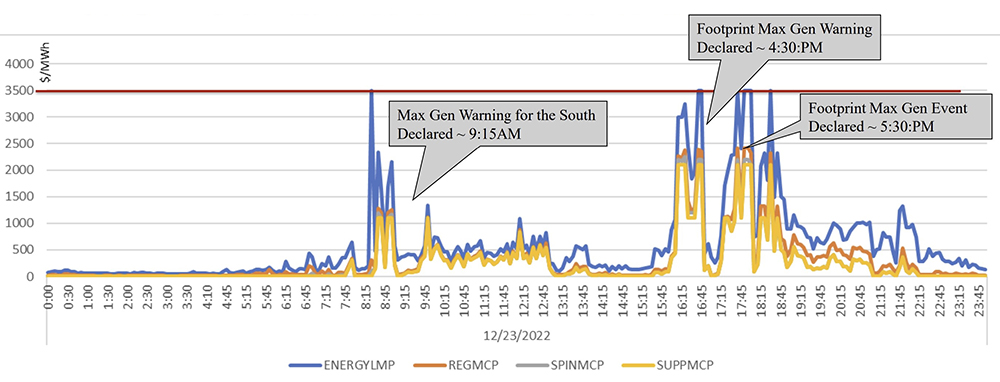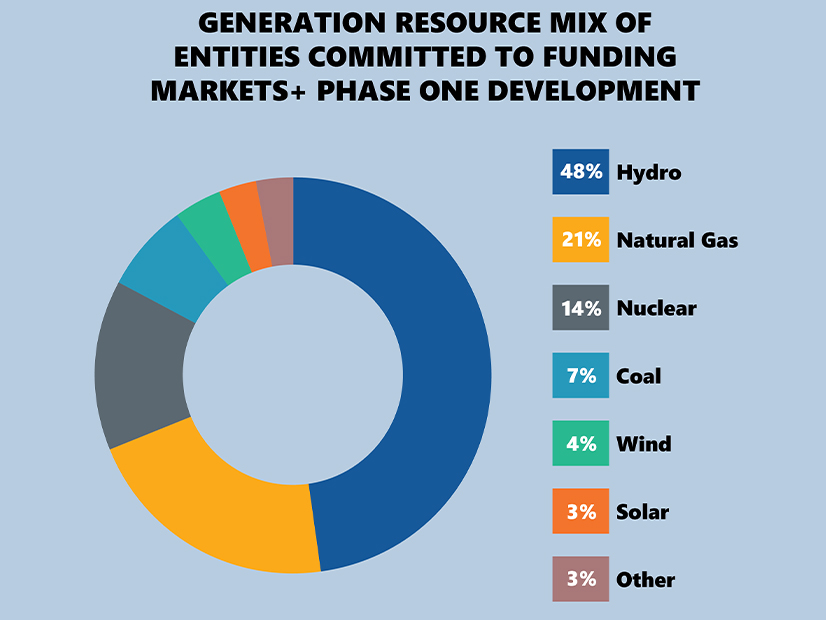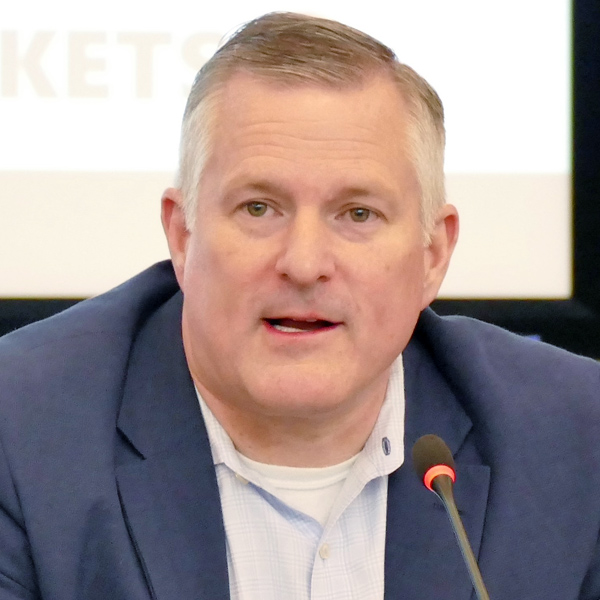A presentation by New Jersey officials on the planned expenditure of $26 million in developer contributions to monitor the impact on coastal marine life from the state’s offshore wind farms drew skepticism Monday from ocean environmentalists worried that the projects are advancing too quickly.
Representatives of the New Jersey Board of Public Utilities and the state Department of Environmental Protection said the Offshore Wind Research & Monitoring Initiative (RMI) has already approved 11 projects for funding, some of which have started. The program, jointly administered by the two agencies, is funded with contributions of $10,000 for each megawatt of capacity from the two projects approved by the BPU in the state’s second OSW solicitation.
The approved RMI projects include studies of passive acoustic monitoring for whales, acoustic telemetry for commercial and recreational fish, and the socioeconomics of recreational fisheries, officials from the BPU and DEP told a 90-minute hearing convened to solicit stakeholder input. The agencies said they are seeking stakeholder input on how to spend the money, which is contributed by the Ocean Wind 2 and Atlantic Shores projects, and what issues should be prioritized.
Another approved project studied the surf clam sector, which is concerned that its business will be dramatically impaired by the turbines. In that case, project researchers helped design a new, smaller clam dredge that could maneuver between the turbines than the larger traditional dredge. A list of eight additional projects that are under discussion but have yet to get the greenlight include a project to tag sea turtles and study their biological health; a study of the impact of turbine foundations on the Cold Pool area of the Jersey Coast; and an initiative to conduct tagging of whales for satellite monitoring.
The hearing unfolded as the first of the state’s three approved OSW projects, Ocean Wind 1, faces opposition from local residents, the commercial fishing sector and local governments. Meanwhile, the BPU is preparing to increase the state’s wind portfolio. According to its agenda, the board will consider whether to approve the opening of a new round of solicitations, which is expected to be larger than the first two.
Renee Reilly, a DEP research scientist, said a team from both agencies compiled the list by identifying potential impacts to marine life, assessing whether each would have a significant impact, and working with “regional research entities and subject matter experts to develop project concepts” and plans to execute them.
The agencies are trying to ensure the program has a “rigorous scientific approach” that meets “our mandate to protect and responsibly manage New Jersey’s coastal and marine resources” while also responding to climate change and protecting the area economy and environment for the future, she said.
“This really is a balance of developing something that’s going to help in the long term [while] ensuring that we’re doing it in a responsible way,” she said, encouraging hearing attendees to “understand how delicately we have tried to balance those two needs.”
Baseline and Potential Risk
Several speakers, however, focused on why the OSW projects are advancing to construction when the impact studies are still in the infant stage.
“We do feel that there is too much too fast, and that the scope, scale and magnitude is reckless at this stage,” said Cindy Zipf, executive director of Clean Ocean Action, referring not only to New Jersey’s projects but others along the East Coast. “We feel that actually that the baseline studies that need to be completed haven’t really even been identified completely. There was obviously a list, but there are many, many more that are needed.
“It’s so critically important for us to have a real sense of what the baseline studies are and what the potential risks are — not project by project, but cumulative — in order to determine what the next phase of study should be done for construction,” she said, adding that that phase is going to “have a much greater impact on the marine environment.”
Swarna Muthukrishnan, water quality research director for Clean Ocean Action, said that only seven of the approved RMI projects have started, and she has been unable to get much sense of their progress, outcome and how the results will be evaluated.
“There are many data gaps,” she said. “My big concern is how can permitting decisions be made accurately if this information, the fundamental information, are lacking.”
The debate over the offshore wind projects has highlighted a split in the state’s environmental community. About half the nine or so speakers at Monday’s hearing were tied to Clean Ocean Action, which has deep concerns about the projects. But most other environmental groups, none of whom spoke at the hearing, vigorously support the projects, seeing it as a key plank in the fight to head off climate change.
Whale Death Impact
New Jersey has approved three offshore wind projects in two solicitations: the 1,100-MW Ocean Wind 1 in the first, and the 1,148-MW Ocean Wind 2 and 1,510-MW Atlantic Shores in the second. The third solicitation could award between 1.2 and 4 GW, and perhaps higher, according to the BPU’s solicitation guidance document.
The agency on Feb. 24 released a new request for stakeholder input for the third solicitation, seeking comments on various issues to be addressed in the final guidance document, including timeline details and aspects of the financial and investment commitments that developers should make for their project.
Ocean Wind 1 has received the most public scrutiny. The BPU on Feb. 17 approved the second of two easements sought by Denmark-based Ørsted on which to run cables from the project offshore through Ocean City on the Jersey Shore to connect with a sub-station nearby. The property owner of the land at issue in one of the easements, Cape May County, opposed the approval and released a statement a week later saying it is reviewing the BPU’s decision “and will likely be appealing to the Appellate Division of the Superior Court shortly.” (See NJ BPU Grants Second Easement for OSW Project.)
“The county is not opposed to wind-generated electricity, but there is too much at stake not to take the time to get it right,” the county’s attorney, Michael J. Donohue, said in a statement that urged the BPU to pause the projects until “the interests of all stakeholders, including all of our local tourism businesses and fisheries, are addressed.”
Donahue also cited the deaths of at least nine whales washed up on the New Jersey shores in recent months, which project critics have highlighted as a reason to conduct more study of the impacts of the projects before they go ahead. They have mounted several protests against the wind initiatives, raising questions about the cause of the whale deaths and suggesting they may be related to preliminary sonar work on the offshore wind projects.
The mayors of 30 communities in the shore area have in recent weeks signed a letter calling for a moratorium on work on the projects and a federal investigation into whether the deaths are linked to the OSW work, according to local press reports.
Government researchers at the Marine Mammal Commission, an agency created by Congress to promote the conservation of marine mammals and their environment, have dismissed any ties to OSW, however. A note on the MMC’s website says that 16 humpback whales have stranded along the Atlantic Coast this winter, but “despite several reports in the media, there is no evidence to link these strandings to offshore wind energy development.”
“As the Gulf of Maine stock of humpback whales continues to grow, more young animals are choosing to overwinter along the Atlantic Coast where they are vulnerable to being struck by ships and becoming entangled in fishing gear,” the note said.
Still, speakers at the hearing on RMI studies said the deaths show the need for studies.
Donna Repoli, who said she is an independent researcher and a member of Clean Ocean Action, referred to the “whales experiencing mass mortality events” off the New Jersey Coast, and said the BPU and DEP should put a priority on the acoustic monitoring of whales.
“We are starting to see some actual problems arising with the marine mammal migrations right now as a direct result of surveying and sonar mapping from the wind farms,” she said. “I’m not against clean energy. But I think there needs to be a middle ground; there needs to be a way where we can do [OSW development] while causing the most negligible amount of risk to the environment and the local wildlife as possible.”


